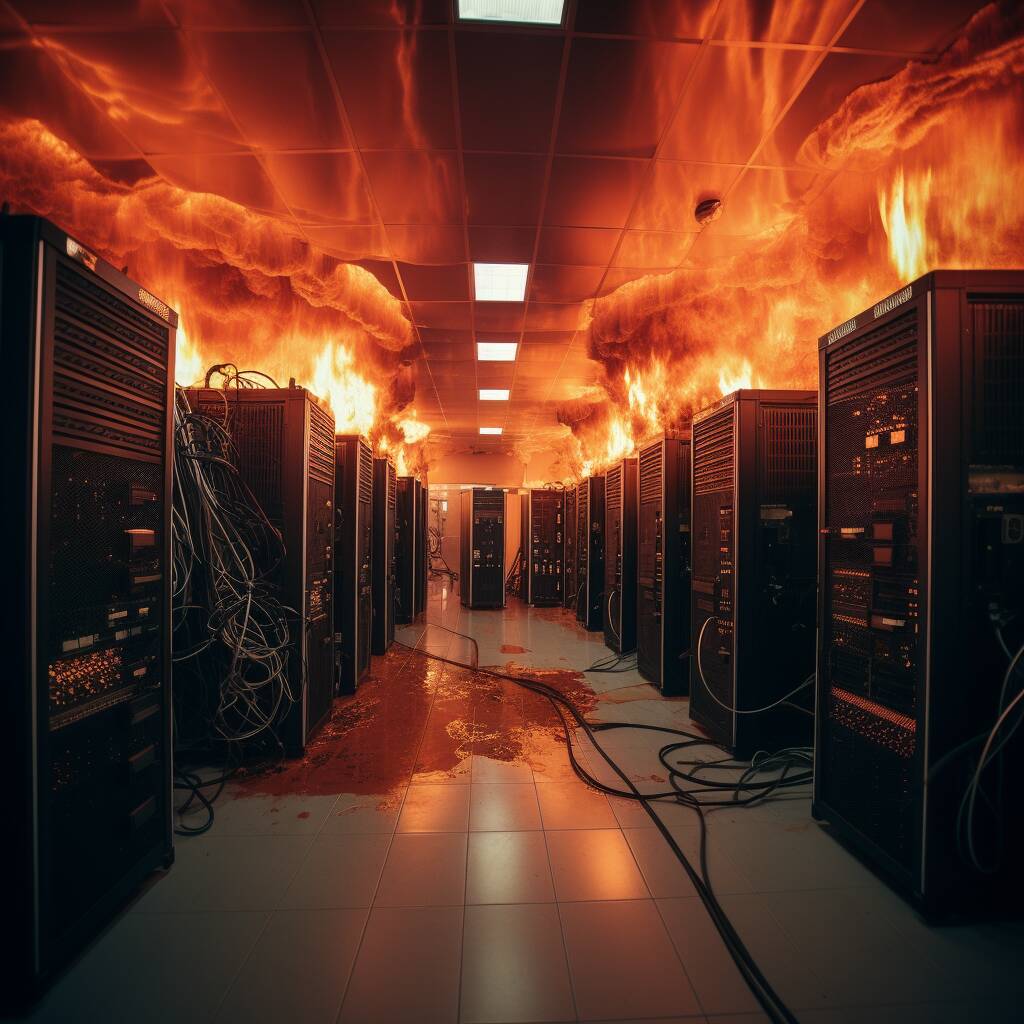Microsoft Walking Away From Datacenter Leases (probably) Isn't A Sign The AI Bubble Is Bursting

Comment Microsoft has walked away from negotiations to lease two gigawatts worth of datacenter capacity in the US and Europe, and has deferred and cancelled other datacenter leases, according to a new report from investment bank TD Cowen.
The bank’s analysts feel Microsoft’s lease cancellations were “largely driven by the decision to not support incremental Open AI training workloads.”
The report comes just over a month after the same analysts revealed Microsoft had terminated leases for several hundred megawatts of datacenter capacity in the US.
For some the cancellations are evidence that the AI boom is about to go bust.
However, we'd argue there's a far simpler explanation as to why Microsoft might be pulling back on its datacenter leases: many datacenters can't handle the power and cooling demands created by high-end AI hardware .
Nvidia's massive NVL72 rack-scale systems promise 30x or better performance for inference workloads, and four times better training performance compared to its Hopper GPUs. That performance comes at the expense of denser racks, higher power consumption and more waste heat production. Racks housing Nvidia’s latest are rated for 120kW of power, three times that of the typical Hopper rack. Liquid cooling is no longer an option but an inescapable requirement.
As TD Cowen notes, hyperscalers and cloud providers must redesign their datacenters to accommodate super-dense, power-guzzling devices – and doing so is far from simple.
Microsoft signing leases for datacenters that weren’t built to handle Nvidia’s latest kit – and whatever comes next – would therefore be short-sighted.
Datacenter capacity planning, as Omdia Principal Analyst Alan Howard tells The Register, "is a very tricky game, and the least preferred scenario is having more demand than capacity. The whole process of acquiring land and securing power is cheap compared to executing."
If the datacenters or colocation facilities Microsoft planned to lease can't cope with the demands of these denser systems, it's not hard to see why the software giant would walk away and focus on building dedicated facilities or shifting to more suitable locations.
Microsoft has already signaled a belief that all-new datacenter designs are needed, and in 2024 even detailed its plans for such facilities.
TD Cowen, however, noted that bringing greenfield datacenter capacity online takes time. Shortages of key components and energy supply aren't helping the situation.
It currently takes roughly 24 months to build a datacenter from scratch, Omdia’s Howard said, before noting xAI's Colossus cluster in Tennessee was built in ten months.
TD Cowen claims that Microsoft has directed its datacenter partners to begin retrofitting existing facilities to support liquid cooling. And, we'll note, it is possible to use in-aisle coolant reservoirs, distribution units, and liquid-to-air heat exchangers to support liquid-cooled systems in existing equipment halls.
In fact, the bank’s analysis suggest that as AI workloads shift from training to inferencing, retrofits may be a better indicator of growth than new leases.
"We increasingly believe that the initial indicator of inference demand will be the velocity of hyperscale retrofits, rather than the velocity of third-party leasing in major markets for incremental child deployments within existing availability zones," the document states.
However, with Nvidia already planning 600kW racks, it remains to be seen if retrofits can satisfy users’ needs.
- Big Red, Microsoft roll out Azure database services for more mainstream Oracle users
- Nvidia's Vera Rubin CPU, GPU roadmap charts course for hot-hot-hot 600 kW racks
- Alibaba exec warns of overheating AI infrastructure market
- What Nvidia's Blackwell efficiency gains mean for DC operators
Along with retrofitting its new facilities, it's also worth noting that Microsoft is already sitting on a substantial quantity of Hopper GPUs, many of which have been tied up running OpenAI's training workloads.
If Microsoft is indeed doing less training work for OpenAI, as TD Cowen claims, Redmond can transition that compute capacity to its own inferencing workloads, or rent it to customers.
In a statement provided to The Register, a Microsoft spokesperson said the company remains committed to spending $80 billion on infrastructure during its 2025 fiscal year.
"Thanks to the significant investments we have made up to this point, we are well positioned to meet our current and increasing customer demand. Last year alone, we added more capacity than any prior year in history. While we may strategically pace or adjust our infrastructure in some areas, we will continue to grow strongly in all regions. This allows us to invest and allocate resources to growth areas for our future," the spokesperson said. ®
From Chip War To Cloud War: The Next Frontier In Global Tech Competition
The global chip war, characterized by intense competition among nations and corporations for supremacy in semiconductor ... Read more
The High Stakes Of Tech Regulation: Security Risks And Market Dynamics
The influence of tech giants in the global economy continues to grow, raising crucial questions about how to balance sec... Read more
The Tyranny Of Instagram Interiors: Why It's Time To Break Free From Algorithm-Driven Aesthetics
Instagram has become a dominant force in shaping interior design trends, offering a seemingly endless stream of inspirat... Read more
The Data Crunch In AI: Strategies For Sustainability
Exploring solutions to the imminent exhaustion of internet data for AI training.As the artificial intelligence (AI) indu... Read more
Google Abandons Four-Year Effort To Remove Cookies From Chrome Browser
After four years of dedicated effort, Google has decided to abandon its plan to remove third-party cookies from its Chro... Read more
LinkedIn Embraces AI And Gamification To Drive User Engagement And Revenue
In an effort to tackle slowing revenue growth and enhance user engagement, LinkedIn is turning to artificial intelligenc... Read more

